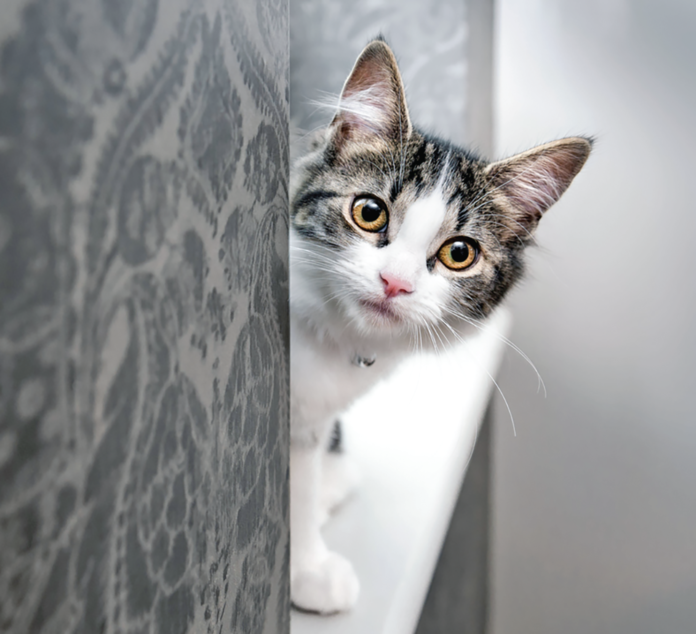Watching your new rescue cat, or a stray you brought into your home, blossom and become part of your family is rewarding. With proper care and attention, your new kitty will quickly feel welcomed and loved. But if you already have one or more cats, each addition should be considered carefully.
Cats are territorial, and adding a new cat will change the feline dynamics in your home. To prevent fights and more stress, give the cats time to get acclimated to each other before the newcomer is allowed free rein in the house.
Create a Home Base
“Introducing a rescue cat to your other cat(s) should be done carefully to avoid any aggression,” says Pamela J. Perry, DVM, PhD, ACVB, behavior resident at Cornell’s College of Veterinary Medicine. “I typically recommend confining one of the cats—usually the newcomer—to a room supplied with all necessary resources (food and water dishes, litter boxes, resting areas, perches, toys, etc.) for the first two weeks.”
This allows your new cat to get used to the sights, smells, and sounds of your home while you start bonding. Spend some time in his room each day interacting with him according to his comfort level. A bold cat might enjoy play and petting from the start. A shy cat may need time to settle in before he wants to be handled, but you can start by sitting near and talking to him.
Your cats can start getting familiar with each other before they can interact directly. “During this time, the owner can exchange odors and pheromones by rubbing the cheek of each cat with a separate cloth and giving the cloth to the other cat to investigate,” says Dr. Perry. “Owners should watch for any aggression or fear reactions during this exchange.”
As the new cat settles in, you can try swapping the cats’ locations to allow the newcomer time to explore the house and your other cat(s) a chance to sniff all the stuff in his room.
Mealtime
Everyone loves food! Dr. Perry has advice to use food to help smooth over introductions. She says, “The cats can be fed on opposite sides of the door to the confinement room at a distance that allows both cats to remain calm enough to eat. Then every couple of days, the dishes should be moved closer to the door. This allows each cat to acclimate to the presence of the other while teaching them to associate each other with something pleasurable, like eating.”
Supervised Free Time
After the two-week acclimation period, you can start allowing both cats to roam freely together. Start out by only letting them interact when you are around to supervise. Watch for signs of stress or aggression. You may need to make adjustments to litterbox and food/water bowl locations once all of the cats are intermingling.
Considerations for Kittens
“Kittens are much more playful than adult cats, which may bother an older cat,” cautions Dr. Perry. Your cat may not find the new little urchin’s antics as adorable as you do.
“It is particularly important to provide the kitten with ample outlets for play behavior. Select toys that flutter, bounce, or move erratically to encourage the kitten to stalk, chase, and pounce on them. Rotate the toys every few days to maintain interest in them,” says Dr. Perry. Providing plenty of play time for your new kitten will both keep him mentally stimulated and tire him out, making him less likely to bother your older cats.
Make sure that your older cat can get away from the kitten if she needs to. She should be able to eat and sleep in peace. After playtime, the kitten can be put in a time out in his confinement room or a large dog crate set up with everything he needs. This will give your other cat a much-needed break.
Taking your time introducing a new rescue cat to your other cats can be inconvenient at first, but it is well worth it to have a smooth, calm transition period. With patience, everyone can meet on their own terms and live in harmony.
Don’t Forget!
Your new cat should be tested for feline leukemia (FeLV) and feline immunodeficiency virus (FIV) before you let him interact with other cats.




